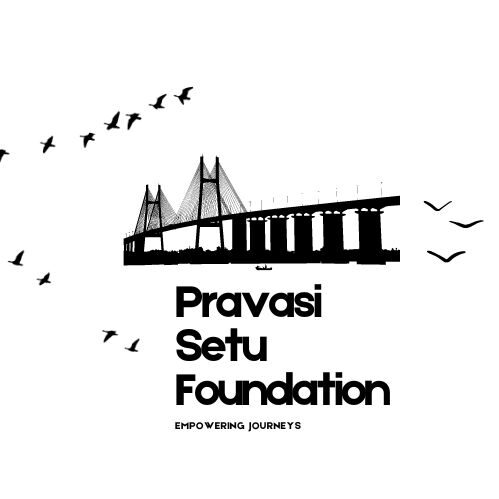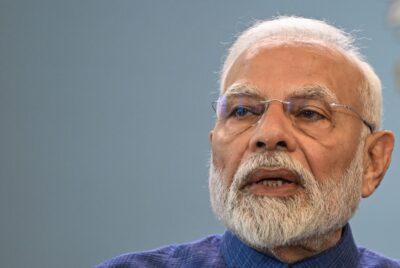Academically, various ambiguities persist in defining the term ‘Diaspora’, but ordinarily, it refers to people who stay abroad while ‘culturally’ embedded with the motherland. Nevertheless, they are part of the ‘transnational’ communities but don’t hesitate to show off their ‘ethno-cultural’ identity. It shows that globalisation is successful economically but culturally fails to break down people’s ‘sense’ of national belongingness. ‘Belongingness’ is a significant eligibility pre condition for being a part of the diaspora community of the country; however, its absence prevents them from being part of such a community.
In the 21st century, the noticeable point is that the contribution of the diaspora to the economic and political development of the motherland is well acknowledged. So, Bharat (India) is not an exception because, in the last three decades (especially post-1991), it has been typically observed that the Bhartiya Diaspora has made a remarkable contribution to the motherland’s political and economic transformation by investing their knowledge and money in various sectors. However, it helped to strengthen bilateral and multilateral ties across the countries in the world.
This could happen quickly because the government has consistently been reinvigorating the cultural consciousness of ‘belongingness’ through various diaspora orientated policy measures. Presently (in the 21st century), the Bhartiya diaspora constitutes 25 million of the 281 million global diasporas, the highest global ranking. Apart from that, a high number sent nearly $108 billion in remittances in 2022, equating to 3% of GDP value. The leadership understood the economic and political significance of the Bhartiya diaspora during the 1991 financial crisis; consequently, foreign economic policy has considered the diaspora an essential category in policy making.
During the 1991 economic crisis, Diaspora remittances quietly helped reduce the financial burden. So, by adopting an ideologically leaned ‘neo liberal’ LPG policy, the ‘diaspora’ became one of the essential evolving components within the contours of Indian foreign policy. Unfortunately, the preceding leadership hardly paid attention towards the diaspora; it can be said they consciously neglected the diaspora from any policy attention. Recently, in the post-2014 Pradhan Sevak Shree. Narendra Modi’s ‘statesmanship’ has quietly shown an incomparable policy attitude towards the Bhartiya diaspora because of its economic and strategic significance. However, he seemed confident that the diaspora would cultivate the motherland’s global image through cultural, financial and political relationships by firmly positioning a ‘soft power’ strategy.
During political visits, Mr Modi’s notable policy behaviour towards the diaspora community is reflected by his constant public and personal interaction with the Bhartiya diaspora worldwide. However, on the domestic front, Mr Modi’s foreign policy contours categorically prioritised ‘Diaspora Engagement’ as an essential ingredient. His positive attention to ‘Diaspora Diplomacy’ created great enthusiasm within the administration based in ‘New Delhi’ to pay enough policy attention to ensure active engagement of the Bhartiya diaspora culturally, economically and politically.
Of course, a ‘Paradigm Shift’ appeared regarding diaspora diplomacy under Mr Modi’s regime, which was mainly missing earlier. Such active ‘Diaspora Diplomacy’ has helped change Bharat’s political image on the global front. The Indian diaspora is an influential part of the global diaspora because of its’ ‘numerical strength’ reflected in its economic capability to help the motherland for economic glorification through investment and remittances. Mr Modi aptly understood such features, hence on the mission to consistently appeal to them by re calling their ‘Bhartiya identity’. Retrospectively, his charismatic leadership convinced the diaspora that the ‘Nehruvian’ perception of the ‘guest’ community changed and is now considered an essential part of the extended ‘Bharatiya’ community. The change in policy attitude galvanised the Bhartiya diaspora across the globe from the developed United States to an underdeveloped Small Island like Fiji to help in the motherland’s economic and cultural transformation. It is not an exaggeration, but the diaspora is almost like ‘oxygen’ for Modi. His visionary concept focused on “three Ds”- democracy, demography, and demand – in his spiels about India’s rise and inherent strengths. But, now there has added a fourth ‘D’ – the ‘Diaspora’. In the 1990s, PM Rajiv Gandhi also tried to harness the diaspora’s capability for technological development in Bharat. But, Mr Modi focuses on harnessing their talents and appealing to their loyalties towards the motherland. No comparable Prime Minister since independence, like Mr Modi, has infused energy and love for the homeland into the diaspora community through sentiments of ‘Nationalism’ and ‘Civilization Achievement’. It is not wrong to say that he is making a diaspora a ‘cultural ambassador’ of Bharat across the globe. In the last nine years, PM Modi has visited about 65 countries that belong to every continent of the globe, where he has faced the Indian diaspora through public interaction.
The most marked grand welcome ceremony of packed audiences (range 20000 to 50000) at Madison Square Garden in New York City (September 2014), Allophones Arena in Sydney (November 2014), Ricoh Coliseum in Toronto (April 2015), Wimble Stadium in London (November 2015) and the Howdy Modi (2019) in Texas etc. His outreach efforts have been quite successful in connecting with the diaspora, going by the massive turnouts at his speeches, the large number of people lining the streets to see him and how many wanted to shake hands and take ‘selfies’ with him.
The visual of a power-packed crowd in every diaspora interaction not only tells a story of how much the diaspora values their Indian connection but also how the current government values engagement with them. BJP General Secretary Shri Ram Madhav said, “We are changing the contours of diplomacy and looking at new ways of strengthening India’s interests abroad. They can be India’s voice even while being loyal citizens in those countries. This is the long term goal behind diaspora diplomacy. It is like the way the Jewish community looks out for Israel’s interests in the United States”.
Mr Modi’s administration appears to be convinced that the diaspora not only plays a crucial role in India’s economic development (as a source of investment, knowledge and technology) but also contributes to strengthening existing bilateral political ties between India and the countries they are based. The contribution of diaspora to strengthening political relationships globally is witnessed in the context of the USA, Indo-Pacific, Europe, the Gulf, etc. For example, in 2008, the diaspora played a crucial role in ensuring the passage of the India-US Nuclear Deal in the US Congress, which uplifted India-US relations to a strategic level of friendship.
In the recent visit of PM Modi to the United States, where he received 15 standing ovations in Congress, he made the Indian diaspora more confident about leadership and motherland. He hoped for better policy initiatives in the future. Backstage at the Kennedy Center, PM Modi observed that most young and educated minds are eager to connect with Bharat through talent and investment. Mr Modi’s presentation of the image of Bharat is as a “Vishvaguru”, well preached the idea that “the century of India”. Umesh Sachdev, an Indian-American founder of Uniphore, an artificial intelligence business, said to PM Modi, “Thank you for lifting the image and spirits of Indian Americans”. This means that by emphasising national pride and civilisational links, PM Modi has successfully cultivated a strong relationship with India’s diaspora across the globe.
The Modi administration has continued the practice of previous administrations in organising the annual “Pravasi Bhartiya Divas” (non-resident Indian Day) to celebrate the successes of the Indian diaspora and to recognise their contribution to India’s growth and development. In the 17th Pravasi Bhartiya Divas (PBD), PM Narendra Modi said, “India will nurture and protect its diaspora spread across the world and urged members of the diaspora to become representatives of India’s heritage”. He termed every overseas Indian a “Bharatvanshi” and promised the government’s support for their well-being. The diaspora represented a “powerful and capable India” Adding the diaspora could help introduce India to the world. He asserted that the “ancestors” of contemporary Indians paved the way for “India’s cultural expansion” in other parts of the world. Of course, PM Modi’s active diplomacy with the diaspora has helped transform Bharat’s image globally.
References:
Grossman, Jonathan (2019), “Toward a Definition of Diaspora”, Ethics and Racial Studies, 42(8): 1264.
Jain, Prakash and Prasad Rajendra (2023), “Indian Diaspora in the twenty-first century: population and regional distribution”, South Asian Diaspora.
Cave, Damien (2023), “Modi and India’s Diaspora: A Complex Love Affairs Making Global Waves”, The New York Times, 18 July 2023.
Srinivas, Junuguru (2019), “Modi’s Cultural Diplomacy and Role of Indian Diaspora”, Central European Journal of International and Security Studies, 13(2): 79.
Kumar, Manoj and Pillay, D.P. (2021), “The Formation of the Indian Diaspora”, Strategic Analysis, 45(4): 287.
Challagalla, Shreya (2018), The Diaspora and India’s Growth Story, ORF Issues Brief, issue No. 232, p.2.
PM Modi’s Vision for Indian Diaspora: Pravasi Bharatiya Divas, Vande Bharat Mission and More (narendramodi.in) Narendra Modi.in (2023), “PM Narendra Modi to inaugurate Pravasi Bharatiya Diwas Convention”, 6 January 2023.


Leave a Reply